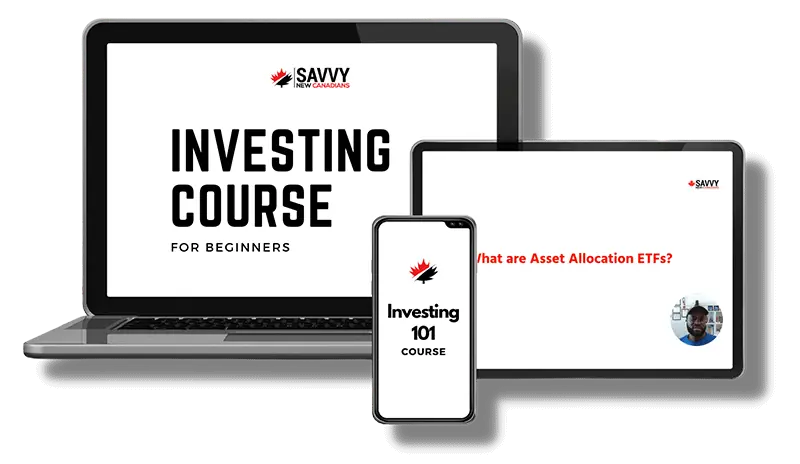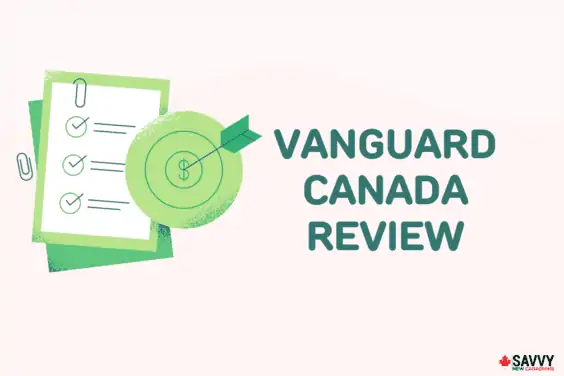This ZGRO review covers its holding, fees, returns, pros and cons, how to purchase BMO ETFs in Canada, and how it compares to VGRO.
Asset-allocation ETFs are an excellent way for DIY investors to access ready-made portfolios that suit their risk profile and return objectives at a low cost.
These one-ticket solution funds offer in-built diversification and frequent rebalancing and save you the time it would take to do these manually.
Regardless of where you fall on the risk spectrum (i.e. conservative, balanced, or growth), you can probably find an asset allocation ETF that works for you from providers such as Vanguard, BMO, BlackRock (iShares), and Horizons.
BMO All-in-One ETF Portfolios
BMO’s line of asset allocation ETFs include:
- BMO Conservative Index Portfolio ETF (ZCON)
- BMO Balanced Index Portfolio ETF (ZBAL)
- BMO Growth Index Portfolio ETF (ZGRO)
- BMO Balanced ESG ETF (ZESG)
These funds are managed by BMO Asset Management Inc. and can be purchased using a discount brokerage account.
ZGRO Explained
ZGRO is BMO’s growth portfolio designed for investors seeking long-term capital appreciation from stocks and bonds.
As expected, it is heavily weighted in equities (80%), while the remainder is fixed-income assets (20%).
ZGRO holds a low-medium risk rating and trades on the Toronto Stock Exchange under the ticker symbol “ZGRO.”
Key facts for this fund are:
- Inception date: February 15, 2019
- Management fee: 0.18%
- MER: 0.20%
- Rebalancing frequency: Quarterly
- Accounts eligible: Personal non-registered, RRSP, TFSA, RRIF, DPSP, and RESP
- Annualized distribution yield: 2.38% (as of August 25, 2023)
- Listing currency: CAD
ZGRO Asset Allocation
ZGRO caters to investors with above-average risk tolerance. Given that its target allocation for stocks is 80%, you can expect the fund to react to economic and market vents with more volatility (up or down).
As of September 1, 2023, the fund comprised 81.54% stocks, 18.44% bonds, and 0.02% cash and cash equivalents.
It is a fund of funds comprising other BMO ETFs as follows:
| ZGRO Fund Holdings | Allocation |
| BMO S&P 500 Index ETF (ZSP.TO) | 35.93% |
| BMO S&P/TSX Capped Composite Index ETF (ZCN.TO) | 19.41% |
| BMO MSCI EAFE Index ETF (ZEA.TO) | 16.80% |
| BMO Aggregate Bond Index ETF (ZAG.TO) | 12.91% |
| BMO MSCI Emerging Markets Index ETF (ZEM.TO) | 6.29% |
| BMO US Aggregate Bond Index ETF (ZUAG-F.TO) | 5.53% |
| BMO S&P US MID CAP INDEX ETF (ZMID.TO) | 2.21% |
| BMO S&P US SMALL CAP INDEX ETF (ZSML.TO) | 0.90% |
These component ETFs provide global diversification by exposing investors to Canadian, U.S., and international stocks and bonds.
Related: Robinhood Canada Review.
ZGRO Returns
ZGRO’s performance history is limited as the ETF is fairly new. It has had a return of +10.67% over the past one year and an annualized average of 7.78% since inception.
The historical performance of an investment asset may offer some clues as to its potential; however, it is only one of several factors you should consider.
For further insight into ZGRO, you could look at its constituent ETFs and their performance over time.
More importantly, you should ensure that your investment objectives, time horizon, and risk tolerance are suited to a growth-oriented portfolio.
Related: Best Investment Apps.
ZGRO Fees
ZGRO has an annual management fee of 0.18% and a Management Expense Ratio (MER) of 0.20%.
Compared to the average bank equity mutual fund with a 1.98% fee, you could save a lot of money over time.
When you consider that active mutual funds rarely beat the market (i.e. their benchmark index), these fee savings, coupled with close-to-market returns over time, can easily translate into more money in your retirement pot.
Compared to a robo-advisor such as Questwealth, you also save some money. For example, Questwealth has a management fee ranging from 0.20% to 0.25%. After adding the in-built ETF fees, your total fees are in the 0.35% to 0.50% range.
The higher fees for robo-advisors come with advantages, including hands-free investing, free financial advice, tax-loss harvesting, and other perks.
Depending on how often you buy and sell ETFs (ZGRO) in your portfolio and your account size, trading fees can significantly increase your costs.
As a self-directed investor, you can protect your fee savings by using a no-commission brokerage platform.
Wealthsimple Trade offers $0 commission trading in thousands of stocks and ETFs for both buy and sell trades.
Questrade offers free ETF Purchases and a low commission of $4.95 to $9.95 per trade when you sell.
Pros and Cons of ZGRO
Investing in ZGRO has its pros and cons
Pros
- Easy to buy and hold without manual rebalancing
- Competitively low management fee compared to traditional mutual funds
- Globally diversified fund
- Designed to offer optimal asset allocation to a growth investor
Cons
- Trading fees can add up if you frequently make small trades
- Deciding when you place a trade can encourage market timing.
ZGRO vs. VGRO
VGRO is Vanguard’s Growth ETF Portfolio. Similar to ZGRO, it has an 80:20 allocation for equities and fixed income.
This Vanguard ETF was launched about a year before ZGRO on January 25, 2018, and was made up of the following ETFs as of September 1, 2023:
| VGRO Fund Holdings | Allocation |
| Vanguard US Total Market Index ETF | 35.74% |
| Vanguard FTSE Canada All Cap Index ETF | 23.75% |
| Vanguard FTSE Developed All Cap ex North America Index ETF | 15.67% |
| Vanguard Canadian Aggregate Bond Index ETF | 11.34% |
| Vanguard FTSE Emerging Markets All Cap Index ETF | 5.70% |
| Vanguard Global ex-US Aggregate Bond Index ETF CAD-hedged | 4.01% |
| Vanguard US Aggregate Bond Index ETF CAD-Hedged | 3.80% |
VGRO has a slightly higher management fee than ZGRO (0.22% vs. 0.18%) and MER (0.24% vs. 0.20%).
How To Buy ZGRO In Canada
Retail investors can easily buy ZGRO using a discount brokerage platform.
- Wealthsimple Trade: Offers free trades in ZGRO and thousands of other stocks and ETFs. When you open a new account and deposit and trade at least $200 in stocks, you get a welcome bonus.
Learn more about Wealthsimple Trade.
Some of the popular ones we have reviewed include:
- Questrade: Offers free ZGRO purchases and low fees when you sell. New clients who fund their accounts with $1000 or more get $50 in fee trades here.
You can also read this Questrade review.
ZGRO FAQ
If you are investing for the long term (10+ years) and are okay with taking an above-average market risk in exchange for potential returns, ZGRO could be for you. If you are somewhat risk-averse or prefer a less volatile portfolio, you may prefer the conservative alternative (ZCON) or a balanced portfolio (ZBAL). All investments carry an element of risk.
Based on the information provided by BMO Global Asset Management, an investment fund manager rebalances the ETF back to its target assets allocation every quarter.
BMO Growth ETF Portfolio Review
Overall
Summary
The BMO Growth ETF Portfolio (ZGRO) is designed for investors seeking long-term capital appreciation. This ZGRO review covers its fees, holdings, pros and cons, how to buy it in Canada, and how it compares to VGRO.
Pros
- Access to a ‘one-ticket’ solution
- Low fund management fee
- Offers automatic rebalancing
- Diversified portfolio
Cons
- Self-directed trading exposes you to potential behavioural biases
- Trading commissions can add up






